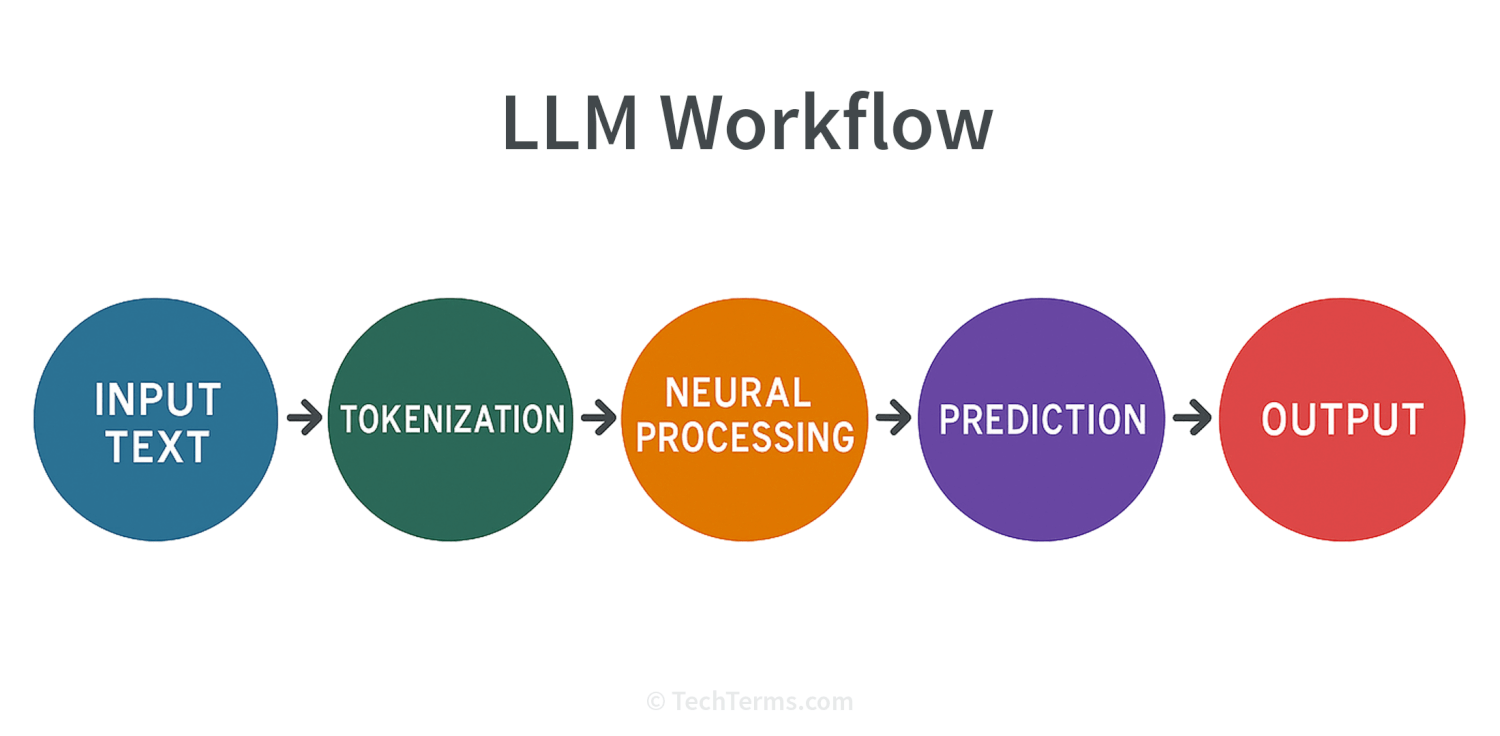LLM
A Large Language Model (LLM) is artificial intelligence (AI) program designed to understand and generate human language. It's an "intelligent" text tool that can answer questions, write articles, summarize information, and have conversations. Generative AI platforms, like ChatGPT, LLaMA, and Gemini, use LLMs to provide human-like responses to user prompts.
How LLMs Work
LLMs break down text input into smaller pieces called "tokens," which are words or parts of words. The model then uses a complex system called a neural network to analyze these tokens, looking for patterns and relationships based on what it "learned" during its training process. LLMs are trained on large amounts of text from books, articles, and websites. The model learns facts, grammar, and common ways people communicate.
When you give an LLM a prompt, it predicts what text should come next, one word at a time, using the patterns it has learned. This enables it to generate anything from short answers to long essays, even computer source code. Because of their human-like output, LLMs are used by chatbots, virtual assistants, translation tools, and many other applications.
What Makes an LLM "Large"
The "large" in LLM refers to both the enormous amount of text data on which the model is trained and the massive number of parameters inside the model — often billions or even trillions. These parameters help the model make decisions about language, but they also require a lot of processing power.
While LLMs are powerful, they do have limitations. For example, they can make mistakes or provide information that isn't accurate. Their output may also reflect biases found in their training data. Therefore, it's wise to double-check important information received from generative AI services and check the references used for the output.

 Test Your Knowledge
Test Your Knowledge